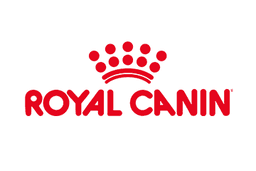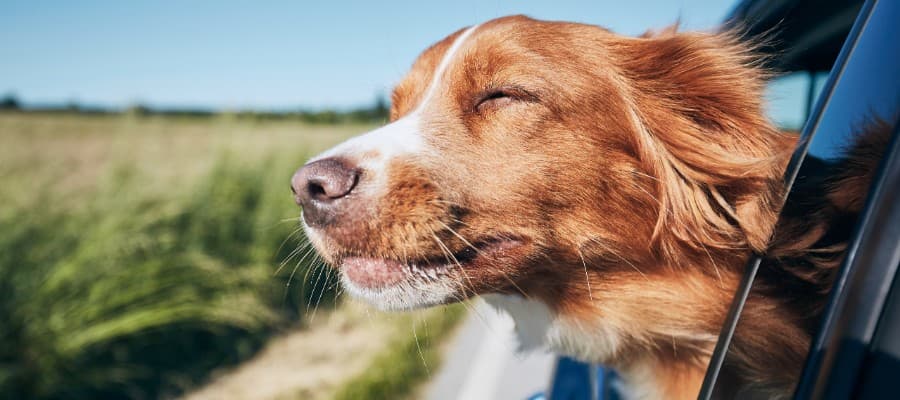Dogs are much-loved family members, so it’s no surprise that an increasing number of us are choosing to travel with our furry companions. As a result, the process has become easier in recent years, with the rise in pet-friendly travel services and accommodation. Travelling with dogs can be fun but does require preparation for a smooth journey. As an owner, it’s natural to have questions, such as, what do you need for a dog to travel, or what are the must-have dog travel accessories?
Here are the best tips for a safe and enjoyable time away.
Road trip practice makes perfect
The very first thing you need to do is make sure your pup is happy to hit the road with you! This means ensuring they’re comfortable during car rides. Take some practice trips and watch for signs of anxiety. Use behavioural training techniques with rewards to make driving fun.
Choose the right dog-friendly holiday location
Do plenty of research on holiday destinations and the facilities available on the drive there. Check for dog-friendly accommodation and parks or beaches nearby for exercise. You’ll need to schedule break stops every couple of hours, so pinpoint major rest stops, parks and towns to ensure you can do so safely.
Get up to date on the basics
Once you’ve chosen the best route and location for you, double check that everything’s up to date with Fido. The RSPCA recommends making sure your dog is microchipped and your current contact details are recorded on the microchip register. In terms of health, ensure all their vaccinations, worming and flea treatments are in order and stock up on any prescription medications.
Different Ways of Travelling with Your Dog
There are several ways to travel with your furry friend, and your dog may react differently to each mode. It’s always best to do your research beforehand so that you can carefully plan and cater to your dog’s needs along the way.
Travelling By Car
Starting with the typical way to transport your dog, you can get them used to the car by allowing them to sit in it with you stationary on the driveway. After your dog shows that they are confident in the car, try going for short rides. Some dogs love travelling on the road, whilst others are fearful, leading to whining, drooling and even sickness. If your dog falls into the latter category, it’s best to make sure your dog travels on an empty stomach.
Travelling By Plane
When you take your dog on a flight, you need to obtain a health certificate from your vet no later than 10 days before travelling, stating that your pet is fit to travel. If your dog is small enough, it will be able to travel in a carrier that fits under your seat. If your furry friend is a large breed, they will have to journey in a crate in the cargo hold if accepted by the airline. Flying can be a stressful enough experience for humans, and your dog may feel anxious, so carefully consider this before making plans.
Travelling By Boat
Before setting foot on a boat, ensure that you have sourced an appropriate carrier or harness for your dog. It’s also crucial to provide your furry companion with a life jacket for safety reasons. Your dog may experience motion sickness, so be sure to have anti-sickness medication on board, as well as all the usual supplies. Don’t forget to pack toys to keep your dog occupied!
Tips for Travelling Safely by Car
Making a car journey with your dog involves a little more research and preparation than you may first expect. To practise safe dog car travel, follow these tips at all times.
Keep Your Dog Restrained
Even though many dogs look like they’re having a great time hanging their heads out of car windows, this is a very dangerous practice. The obvious risks are external obstacles and dogs jumping out of windows. Less obvious is that high speed winds can be harmful to your pup's eyes and ears.
By law, you need to keep your dog restrained whilst travelling in the car. Whoever is driving needs to be free from distraction and your furry friend secured in place to reduce the risk of injury. To achieve this, invest in dog travel gear, such as a seat belt or harness, or crate if your dog is a smaller breed.
Ventilation is critical for dogs on car journeys, so use air-con or keep windows open to promote airflow. However, remember to never let your dog ride with its head outside of an open window for safety reasons.
Don’t Leave Your Dog Unattended
Under no circumstances can you leave your dog alone in a vehicle. Cars are heat traps made from metal and glass, meaning that even in mild weather conditions, your dog is at risk of severe dehydration and heatstroke, potentially leading to loss of life. Canines possess far fewer sweat glands than humans, which aren’t as effective for heat release, and so struggle to cool down.
Have Backup Food and Water
Always have a supply of bottled water in the car for your furry friend. Buy a travel-friendly dog bowl and frequently stop so that you can offer your dog a drink. Also, pack your dog’s usual food, along with extra treats to feed on journey breaks.
How to stop dog travel sickness?
Avoid feeding your dog in a moving vehicle, as the motion may cause nausea.
Creating the Space
Larger breeds of dogs typically need to travel in the boot of the car. You will need to invest in a dog guard to keep them contained and ensure that the area is clutter-free with plenty of room for comfy bedding.
A crate, a dog seat belt or harness, works best for smaller dogs, with your dog secured in the back seat.
Never travel with your dog in the front seat. Firstly, your dog would be at risk of injury from front-seat airbags in the event of an accident, and secondly, your furry companion will distract you from keeping your eye on the road.
Doggy road trip packing essentials
Packing a doggy bag with all the essentials means a stress-free trip for you. Here’s what you’ll need:
- Regular food and treats
- Water bowl and water
- Dog bed or blanket
- Collar and lead
- Favourite toys
- Pet waste bags
- Grooming equipment
- Medications and first aid kit
Tips for easy road trips with dogs
The number one tip for an easy ride is to tire your cherished pooch out before you leave. When you go for a long run in the park or play in the backyard, it’s likely they’ll settle in and sleep for a good portion of the trip. To keep restlessness at bay, take chew toys and treats.
It’s important to do on-lead exercise at rest stops, as dogs can become unpredictable in new environments. Even if you don’t feel like it’s a hot day, never leave your dog unattended in a car as heat stress is a very real danger.
Your dog will likely feel out of its comfort zone in the car, so help your dog relax by packing its favourite toys. Place the toys in with your pet’s bedding. If you’re a passenger in the back seat next to your dog, you may be able to play a game with them by using a tug of war toy, for example. Ensure that you never disturb the driver, however.
Lastly, and one thing you really don’t want to forget to pack is dog clean up supplies. Dog waste bags and training pads, the latter especially if it’s your furry friend’s first journey, are must-have dog travel accessories. Stop for a bathroom break every two to three hours. If your dog is young or elderly, they are less able to hold their bladder, and you will need to stop every 30 to 90 minutes.
Travelling with your dog has the potential to be an exciting adventure for both of you. However, it’s natural to have anxieties with so much to consider, especially if it’s the first time going away with your furry companion. Always remember that preparation really is key! By following the advice here, you’ll be able to ease the process, allowing for a safe and trouble-free journey.






























